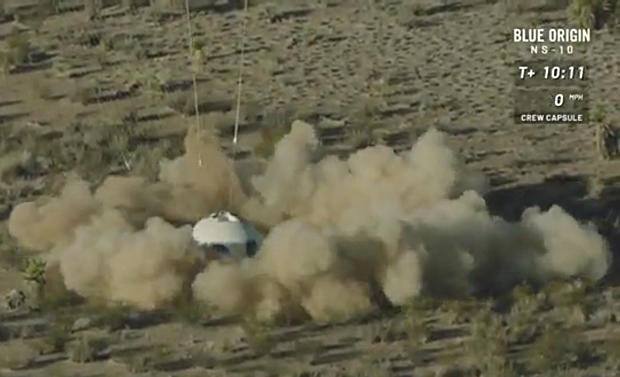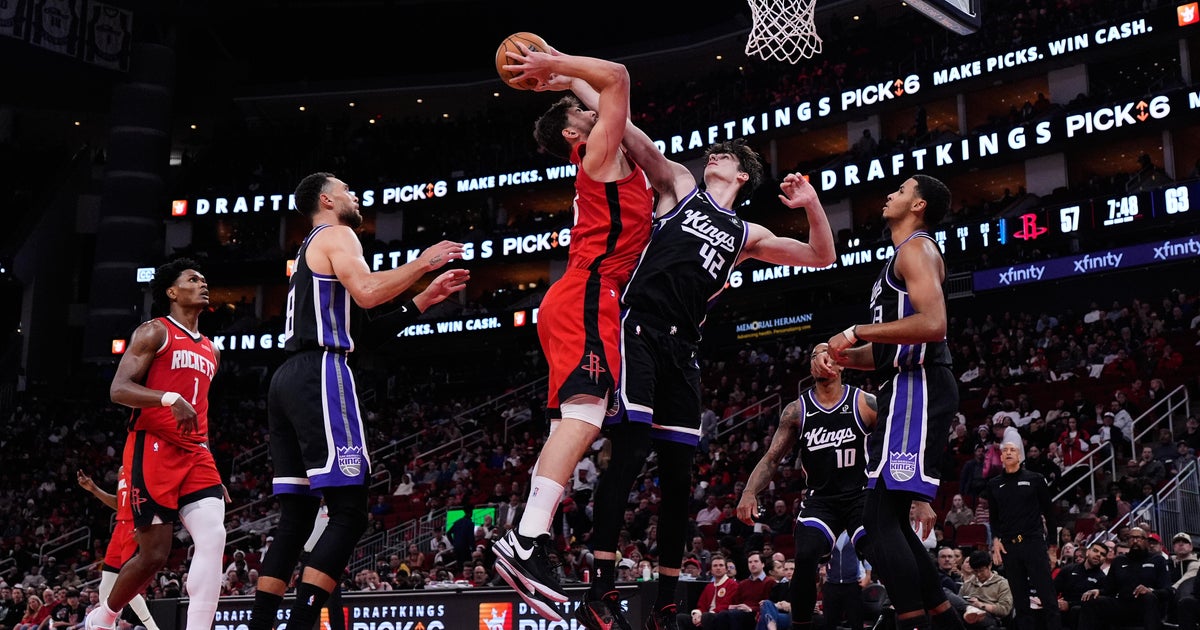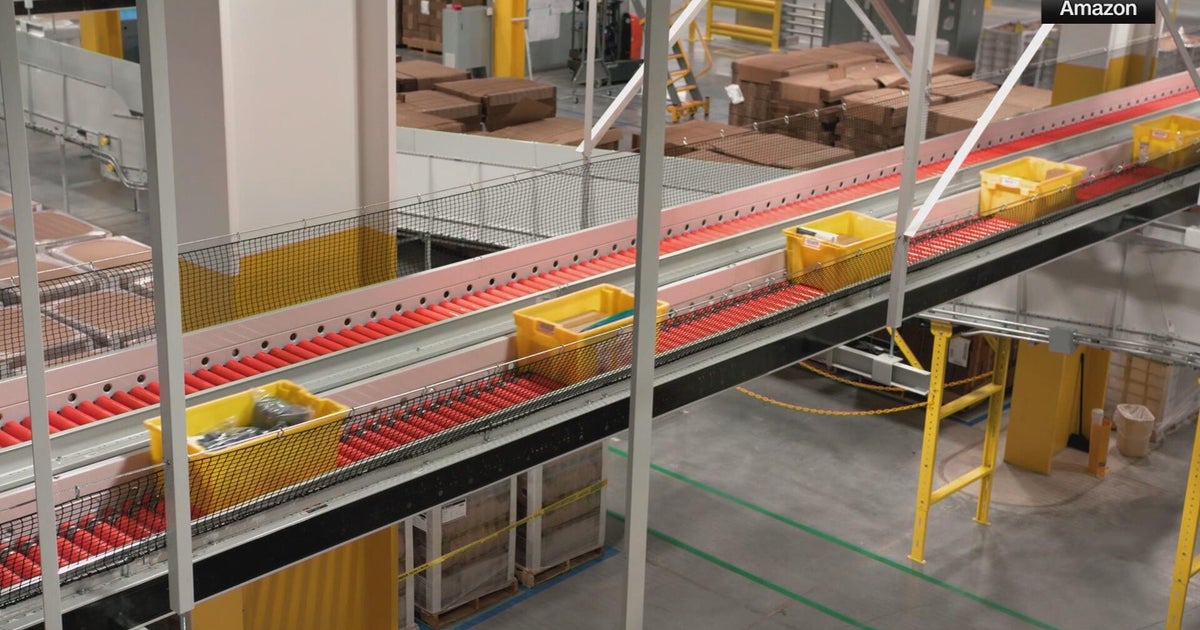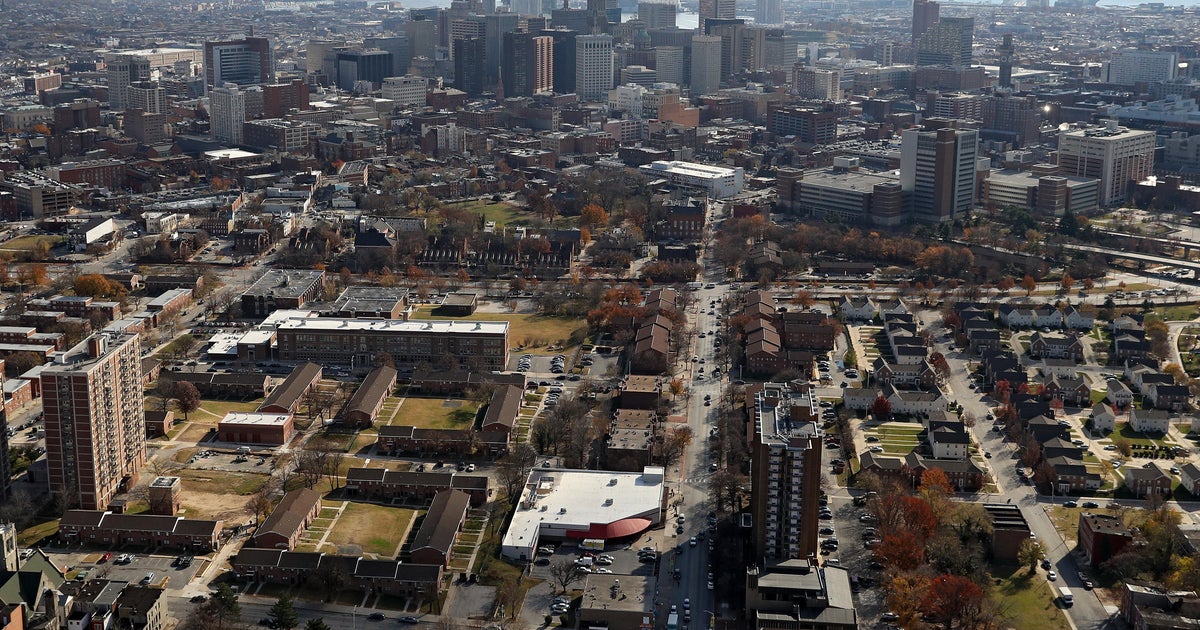Bezos' Blue Origin launches successful New Shepard test flight
Blue Origin launched a reusable New Shepard rocket and capsule loaded with NASA microgravity experiments on a dramatic 10-minute sub-orbital flight high above Texas Wednesday. Today was the 10th test launch of the hydrogen-fueled rocket as the company, owned by Amazon-founder Jeff Bezos, gears up to begin crewed flights later this year.
Running more than a month late because of technical issues and high winds earlier this week, the stubby rocket's BE-3 main engine roared to life at 10:05 a.m. EST (GMT-5) and quickly pushed the launcher straight away from its firing stand at Blue Origin's West Texas flight test facility.
The rocket smoothly accelerated as it consumed its hydrogen-oxygen propellants and lost weight, soaring up through a clear blue sky atop 110,000 pounds of thrust. After reaching a maximum velocity of 2,226 mph, the New Shepard capsule separated from the booster and continued coasting upward to its target altitude of 350,775 feet feet, or 66.4 miles.
That was well above the 50-mile-altitude the U.S. Air Force considers the "boundary" between the discernible atmosphere and space and the 62 miles sanctioned by the Fédération Aéronautique Internationale, an organization that maintains aviation and aerospace records.
While the capsule climbed to its apex and began descending, giving the experiments on board about five minutes of weightlessness along the way, the booster fell tail first toward Earth, restarting its engine and deploying four landing legs before settling to a computer-controlled touchdown on a concrete pad near the firing stand.
The capsule, meanwhile, landed a short distance away under three large parachutes, firing braking rockets an instant before touchdown, hitting the ground at walking pace and kicking up a cloud of dust. Mission duration was 10 minutes and 15 seconds.
"Believe me, if I could, I would jump on top of that rocket tomorrow," Ariane Cornell, head of astronaut strategy and sales at Blue Origin, said at an aerospace conference earlier this month. "We've already had several successful tests with New Shepard, and so I would love to go.
"But we're not selling tickets yet. We have not selected a price yet, despite what you might have read. ... We haven't determined when we're going to sell tickets. We are so focused right now on testing New Shepard through and through."
This was the 10th test flight of Blue Origin's fully automated and reusable New Shepard booster and spacecraft since the program's maiden flight in 2015. The only failure so far in the test program was a booster problem during the first flight that resulted in a crash landing. The capsule landed safely.
The roomy New Shepard capsule is designed to carry a half-dozen space tourists, researchers and/or experiments out of the discernible atmosphere and into space.
Strapped into reclining seats at launch, New Shepard passengers will be able to unstrap and briefly float about the cabin near the top of the trajectory when they will experience five to six minutes of weightlessness and enjoy panoramic views from the largest windows ever built for a spacecraft.
Falling back into the thick lower atmosphere, passengers will experience about four to five times the normal pull of gravity before settling to a relatively gentle touchdown.
For safety, the New Shepard capsule is equipped with "full envelope" abort capability, meaning its escape system can quickly push the capsule away from a malfunctioning booster during all phases of flight, from ground level to high altitudes and any point in between. That system has been successfully tested twice, once at ground level and, last July, at high altitude.
Company officials have said crewed flights are expected to begin later this year, but they have not said whether that means paying customers or company test personnel.
"So exciting to think that human spaceflight is just around the corner," Cornell said before launch Wednesday. "We're aiming for the end of this year, but as we said before, we're not in a rush, we want to take our time. We want to do this right."
For the NS-10 test flight, the New Shepard capsule was packed with NASA-sponsored microgravity experiments, including one to measure fuel levels using sound waves, another to test a vibration isolation system, one to test a new technique for cooling electronics in space and one designed to better understand the behavior of dust particles in low gravity.
"These NASA-supported experiments will help advance in-space propulsion technologies, habitation systems, science instruments and other capabilities crucial for exploration," NASA Administrator Jim Bridenstine said. "Like the researchers, I'm excited to learn the results from this very important flight."
Whenever the New Shepard begins operational flights, it will be competing against Richard Branson's Virgin Galactic, which is testing a futuristic looking spaceplane that's also intended to carry space tourists and others on sub-orbital flights to space. Tickets are expected to initially cost more than $200,000.
Unlike New Shepard, Virgin Galactic's SpaceShipTwo is carried aloft by a carrier jet and released at high altitude. The spaceplane's rocket engine then ignites to propel it just out of the atmosphere before gliding back to Earth for a runway landing.
Two test pilots successfully carried out Virgin's first test flight out of the atmosphere last month, a major milestone in the company's recovery from an in-flight breakup in 2014 that killed one of the spaceplane's two pilots. The mishap was blamed on pilot error and the control system in question was redesigned to prevent any chance of a recurrence.
Along with the suborbital New Shepard rockets and spacecraft, Blue Origin also is developing a powerful new engine, the BE-4, to help boost satellites into orbit using much larger New Glenn rockets. The engines also will be used by United Launch Alliance's upcoming Vulcan rocket.
Blue Origin has built a huge rocket factory just outside the Kennedy Space Center in Florida to manufacture New Glenn boosters and is developing a launch pad at the nearby Cape Canaveral Air Force Station. The New Glenn will compete with ULA's Vulcan and with SpaceX boosters in the U.S. launch market.










